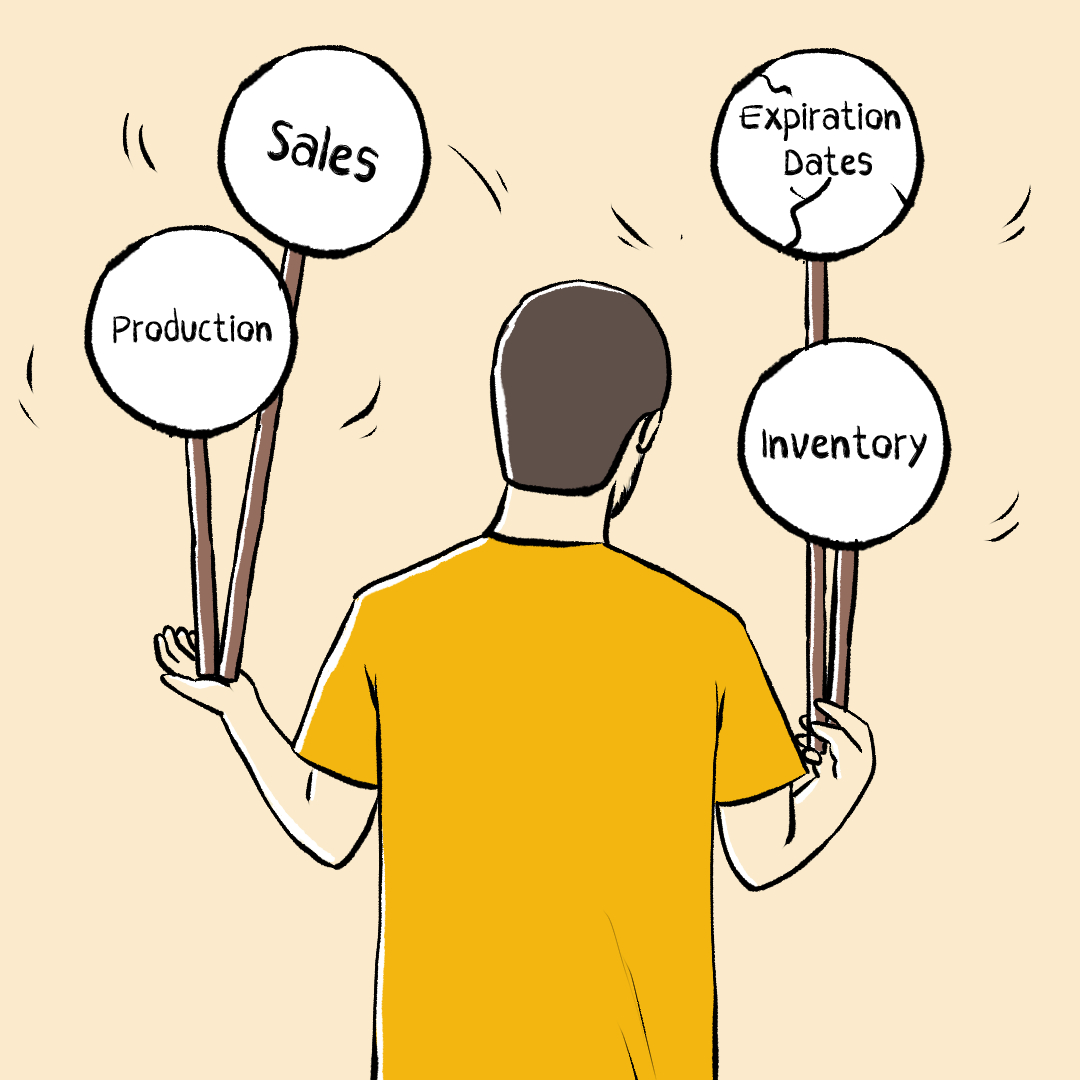Once Tantos started landing on actual store shelves, I realized inventory, how much to produce, when to produce it, and when to ship, could make or break us. Every new purchase order felt like a mini victory, but it also triggered a new set of logistical puzzles: Do we have enough product on hand to fulfill in time? If not, how quickly can we run another batch without accidentally flooding our 3PL with more Tantos bags than we can sell? Welcome to the art and science of inventory management, where a single miscalculation might leave you scrambling—or stuck with a mountain of expiring bags.
Now that we’re at a stage of doing about one production run a month, I’ve learned that if you don’t plan carefully, you’ll get a big purchase order you can’t fulfill on time or you’ll end up with too much product you won’t be able to sell before its expiration date. While we’re working on building better forecasting methods, it often still feels like educated guessing. If I over-order, we risk tossing product; if I under-order, we risk stockouts and upset retailers. Neither is a good look.
We do have inventory management software, but it’s pretty basic—definitely not some fancy forecasting system. In the beginning, I checked and double-checked our inventory constantly, praying the next purchase order wouldn’t catch me off guard. Because we’re a small brand, there’s not enough historical data to confidently predict future sales. So for now, I rely on a mix of real-time data from our website, Amazon, and any wholesale leads we’ve got cooking. If I sense a few retailers might place orders soon, I’ll start planning the next production run so we can fulfill everything simultaneously.
We’ve already experienced overproduction. After our first run, we didn’t sell enough before the expiration window crept up, so we had to close out a chunk of product. That’s when I learned a crucial lesson: if the expiration date is, say, July 1, most retailers want a solid two-month cushion (at least)—meaning you really have to have it delivered by May 1. In hindsight, I would’ve preferred to underproduce and risk shorting a few stores temporarily, rather than throw out or donate unsold chips. But hey, you live and learn.
Tracking Sales Daily
If there’s one thing I watch like a hawk, it’s sales data. Without sales, there’s no revenue, and without revenue, we’re toast. I check our numbers every day, sometimes multiple times a day, to see how fast we’re burning through inventory and when we’ll need another run. It can feel borderline obsessive, but that’s the life of a founder trying to keep everything afloat. The moment I sense we’re a few weeks away from running low, I hit up our co-packer to schedule the next batch.
Our co-packer handles the raw materials-pellets, seasoning, packaging-making sure they’re stocked well in advance. These have longer shelf lives, so they can plan a good six months out. But I still keep them updated on any potentially big orders on the horizon, so they can ramp up if needed. The last thing I want is a purchase order from a major chain, only to find out we’re short on raw materials.
Here’s where it gets tricky: our co-packer’s minimum order quantity is seven pallets per flavor. A single pallet holds 72 boxes, each box has eight units, that’s 4,032 units of one flavor. With a shelf life of about nine months, I’m on the clock as soon as those bags leave production. It’s a delicate dance: produce enough to meet demand but not so much that we risk a bunch of expired product.
So how do I know it’s time to start scaling production? For one, I look at consistent demand—multiple retailers placing orders regularly. I also factor in logistical efficiencies. Full truckloads (26 pallets) are far cheaper per unit than partial loads. But right now, we’re still juggling a mix of small to mid-sized orders, ensuring everything sells before those dreaded expiration dates. Once we have enough distribution centers across the country, we’ll consider larger, more cost-effective runs.
If you’re a founder figuring out inventory, production, and sales forecasts, one thing is crucial: Know Your Distribution. Keep the conversation going with retailers about how your product is performing. They can often provide sales-per-store-per-week data. Even a “back of the napkin” forecast is better than shooting in the dark. And if you’re torn between over- and under-producing, it’s often safer to underproduce. Sure, some retailers might wait a week or two for restocks, but that’s better than tossing unsold product. Oh, and if there’s one fallback strategy, it’s sell, sell, sell, the faster you move product, the fewer inventory headaches you’ll face.









